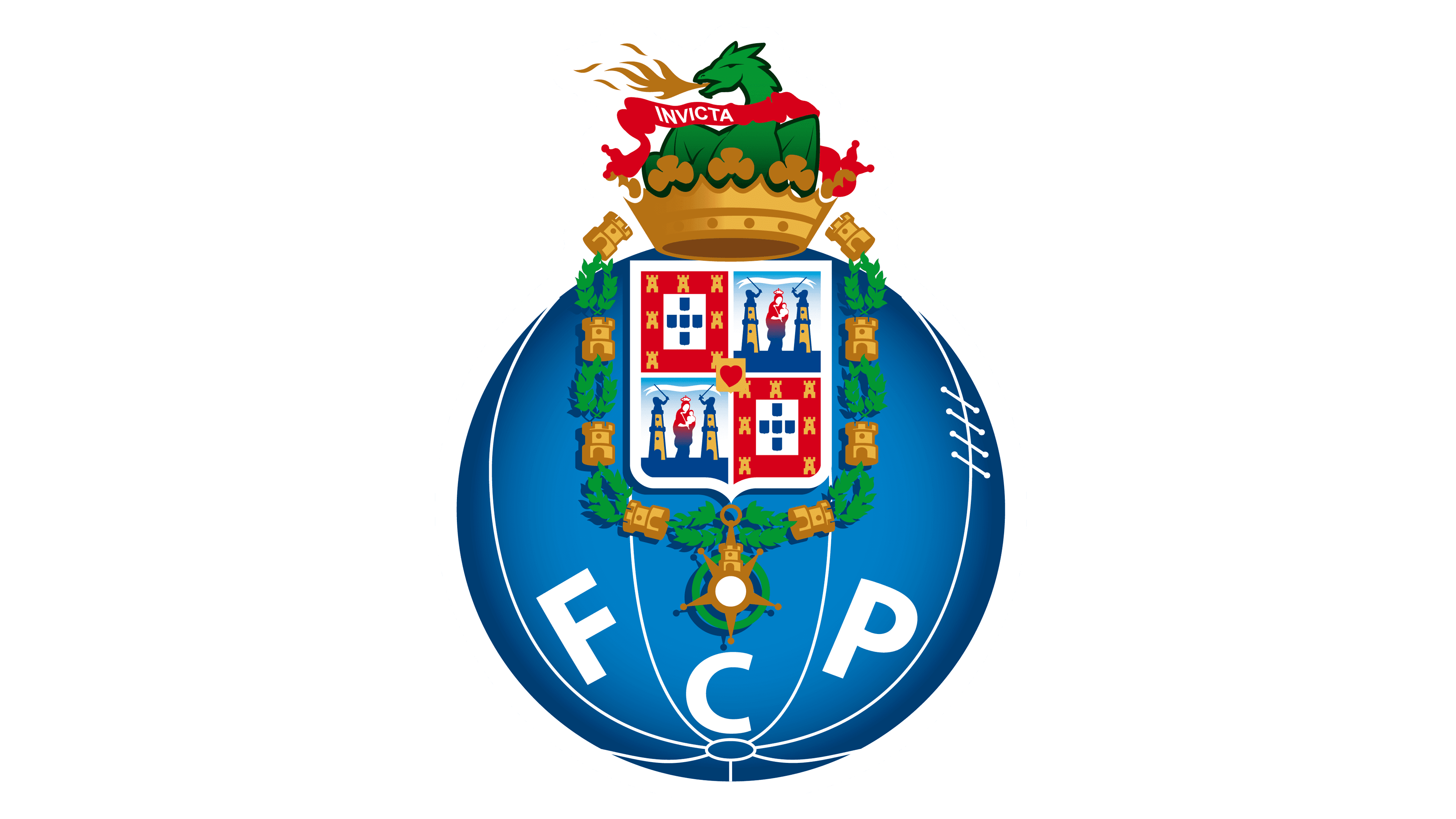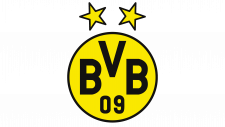FC Porto Logo
FC Porto, a prominent Portuguese football club, is renowned for its passionate fanbase and competitive spirit. Established in 1893, this team from Porto, a vibrant city in Portugal, has a storied history in both domestic and European football. They’re celebrated for their tactical gameplay, often showcasing a blend of skillful offense and steadfast defense. Porto’s blue and white striped jerseys are iconic, symbolizing the team’s rich heritage and relentless pursuit of victory. They have a reputation for nurturing talented players, many of whom go on to shine internationally. The club’s success includes numerous Primeira Liga titles, several Taça de Portugal victories, and impressive feats in UEFA competitions, including the Champions League. Their stadium, Estádio do Dragão, is a fortress of fervent support, echoing with chants and cheers on match days. Porto’s ongoing quest for excellence, both in Portugal and abroad, marks them as a formidable force in the world of football.
Meaning and history

FC Porto, birthed in 1893 in the historic city of Porto, Portugal, has carved out a unique niche in the world of football. Embarking on a journey from humble beginnings, the club has ascended to prominence both in Portugal and on the European stage.
The early 20th century saw Porto laying down its roots in the Portuguese football landscape, gradually emerging as a formidable force. Their breakthrough came with clinching their inaugural national league title in the 1930s, heralding a new era of success. The club’s trajectory took a steep upward turn in the latter half of the 20th century, driven by visionary leaders like José Maria Pedroto. This period was marked by domestic dominance and the laying of foundational stones for future international acclaim.
It was in the 1980s that Porto truly announced itself to the European audience. The crowning moment came in 1987 with their maiden European Cup victory, a feat that reverberated across the continent. This triumph was not merely a trophy; it was a symbol of Porto’s strategic genius and indomitable spirit.
The decades that followed saw Porto fortifying its position as a powerhouse in Portuguese football while also etching its name in European competitions. The eras of Bobby Robson and José Mourinho were golden chapters in the club’s history. Mourinho’s reign, in particular, was a period of unparalleled success, highlighted by the conquest of the UEFA Cup in 2003 and the UEFA Champions League in 2004, cementing Porto’s legacy in European football.
In the contemporary football landscape, Porto remains a bastion of excellence in Portugal and continues to make waves in European tournaments. The club has been a cradle for emerging talents who have gone on to achieve global recognition.
FC Porto’s narrative is one of unyielding ambition, innovative approaches, and a deep-rooted commitment to footballing excellence. The iconic blue and white stripes are not just colors; they represent a legacy of victories, a relentless quest for greatness, and a profound bond with a passionate fan base. As the club moves forward, its rich history continues to be a beacon of inspiration and a testament to its status as a venerated institution in the football world.
What is FC Porto?
FC Porto is a prestigious football club from Porto, Portugal, celebrated for its rich history and dynamic presence in both national and European football circles. Founded in 1893, the club is renowned for its distinctive blue and white stripes, symbolizing a legacy of resilience, tactical innovation, and a deep connection with its passionate supporters. Porto stands as a testament to footballing excellence, consistently competing at the highest levels and nurturing talents who leave an indelible mark on the global football stage.
1908 – 1913
The logo is a striking emblem of simplicity and elegance. Set against a deep blue backdrop, a monogram of interlaced white letters forms the centerpiece. The letters, which appear to be an artistic fusion of ‘F’, ‘C’, and ‘P’, stand out with a fluidity that suggests motion and unity. The monogram’s design is reminiscent of classic European crests, conveying a sense of tradition and timelessness. The overall circular shape of the logo, a universal symbol of unity and wholeness, encapsulates the intertwined initials, hinting at the club’s cohesive spirit. This emblem, devoid of any additional adornment, speaks volumes of the club’s identity with its clean and distinguished composition.
1913 – 1922
This iteration of the logo presents a marked evolution from the previous design. The monogram has been simplified to bold, standalone letters “F”, “C”, “P”, prominently centered against the deep blue field. The design retains the circular form, an emblem of unity, but introduces white lines radiating from a central point, suggesting dynamism and a forward-reaching energy. A notable addition is the decorative football stitch-like detail on the right-hand side, a nod to the club’s sporting essence. These white lines and the football detail create a sense of motion, hinting at the club’s forward momentum and progress. The logo harmoniously balances tradition with a refreshed sense of purpose and modernity.
1922 – 1970
The logo has undergone a significant transformation from its predecessor, introducing a rich tapestry of heraldic symbolism. Central to the design is a shield adorned with detailed icons, including dice and human figures, set against a backdrop of red and white quadrants, which inject a vibrant contrast to the blue outer circle. Encircling the shield, laurel wreaths signify victory and honor, a nod to the club’s sporting achievements. Atop the shield rests a crown, suggesting regal prestige and a dragon, an emblem of power and defiance. The inclusion of “F”, “P”, and “C” is more subtle, positioned at the base, integrating seamlessly into the overall design. This version of the logo is a more elaborate narrative of the club’s identity, blending traditional heraldry with elements that celebrate its footballing legacy.
1970 – 1986
This evolution of the logo maintains the heraldic complexity of its predecessor while introducing new elements. The central shield is now framed by two golden castles, symbolizing strength and permanence, and flanked by statuesque figures, likely personifying the club’s ideals or the city’s historical significance. Above, the word “INVICTA” crowns the design, a Latin term meaning “unconquered,” speaking to the club’s enduring spirit. The dragon above the shield appears more pronounced, reinforcing the club’s fierce determination. Laurel wreaths still encircle the logo, interspersed with crossed footballs and bones, suggesting a blend of traditional victory and a tenacious, fighting spirit. The monogram “F”, “C”, “P” at the bottom has been stylized with more flourish, integrating seamlessly with the laurel and the soccer ball motif, giving the logo a cohesive and regal air.
1986 – 1995
In this logo iteration, the central shield undergoes a stylistic refinement, displaying a more intricate cityscape within its quarters. The figures inside the shield are now contained within arches, suggesting architectural heritage, while the heart symbol remains prominent, possibly evoking the club’s core values or a local emblem. The color palette is more subdued, with softer shades lending a contemporary touch. The “INVICTA” banner retains its place, reinforcing the city’s unyielding spirit. Surrounding the shield, the laurel wreaths are now lush and leafy, implying growth and vitality. The football motif at the bottom is more stylized, and the monogram “F”, “C”, “P” adopts a bolder, more assertive font. Collectively, these changes reflect a blend of tradition with modernity, honoring the club’s past while looking ahead to its future ambitions.
1995 – 2002
The logo reveals a vivid alteration from its predecessor, showcasing a more dynamic and colorful rendition. The shield now bursts with a brighter palette, highlighting the red and blue quarters and the statues within, which stand more pronounced against the vibrant backdrop. Gold now embellishes the intricate details of the shield, and the castles, signifying fortitude, are more prominently golden. The dragon atop the crown appears livelier, reinforcing the club’s fiery spirit, and the “INVICTA” ribbon is more prominent, underlining the unvanquished essence of the club. The laurel wreaths encircling the logo are denser, symbolizing a rich heritage of victory. The “F”, “C”, “P” letters are bolder and more defined, asserting the club’s identity with greater confidence. Overall, this logo iteration is a celebration of tradition with a refreshed, more assertive look.
2002 – 2010
The logo maintains its core heraldic elements while embracing a cleaner and more stylized aesthetic. The shield’s color saturation has been intensified, offering a more striking visual contrast. Figures within the shield are reimagined with a contemporary touch, standing more prominently against the quarters. The crown atop the shield is now adorned with vividly colored fruits, possibly signifying abundance and success. The green dragon, symbolizing power and defiance, has been simplified and stylized, still perched above the word “INVICTA,” which remains a bold declaration of the club’s resilience. The surrounding laurel wreaths are streamlined, contributing to a more modern and polished look. The football and anchor emblem, nestled at the base, is more pronounced, symbolizing the club’s maritime connections and sporting passion. The monogram “F”, “C”, “P” features a cleaner font, reinforcing the club’s identity with contemporary clarity. This logo refinement represents a harmonious blend of tradition with modern design sensibilities.
2010 – 2017
The logo preserves the essence of its predecessor while refining its visual elements for a crisper appearance. The shield retains its quartet of detailed images but is now framed by a richer, more royal blue that enhances the overall vibrancy. Statues and castles within the shield are now illustrated with increased clarity, suggesting a renewed focus on the club’s historical ties. The dragon, emblematic of the club’s fierce determination, is rendered with a fresh dynamism, and the “INVICTA” ribbon stands out with enhanced prominence. The laurels encircling the logo have been fine-tuned for symmetry, enhancing the visual harmony. At the base, the anchor and football emblem appears more integral to the design, symbolizing a steadfast connection to the club’s maritime heritage and footballing culture. Lastly, the monogram “F”, “C”, “P” is now sharper, declaring the club’s identity with bold assurance. This logo update is a nod to the club’s progressive stride while honoring its storied past.
2017 – Today
The logo continues to feature the traditional elements: a shield with detailed illustrations, a crown with fruits, the dragon, and the “INVICTA” banner. The color scheme, composition, and overall design seem to uphold the club’s visual identity, with the same balance of heraldic symbolism and a nod to the club’s footballing passion. If there are subtle changes, they pertain to minor refinements in color gradation or graphical detail to keep the emblem modern and visually appealing while respecting the club’s storied heritage. This logo reaffirms the club’s commitment to its history, values, and the unyielding spirit encapsulated by the term “INVICTA”.



















